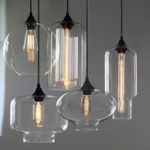The parent of a ViewModel cannot be changed on the fly. This object holds a map of config properties that will update their binding as they are modified. However, transitions https://forexaggregator.com/ with the same name on the same component will still cancel each other out, if created via createTransition on the same selection or with no selection provided.
This syntax can be a helpful shortcut to using un; particularly when removing multiple listeners. See un for the proper syntax for removing listeners added using the element config. Setting this property to true will result in setting the object’s prototype to null after the destruction sequence is fully completed. After that, most attempts at calling methods on the object instance will result in “method not defined” exception. This can be very helpful with tracking down otherwise hard to find bugs like runaway Ajax requests, timed functions not cleared on destruction, etc.
- With canvas you have to find another way to make an event heard on our canvas elements.
- You can see that the alpha is set to 1 for currently visible courses, and to 0 for invisible ones.
- The listener may be set directly on the instance, or on its class or a super class or on the Ext.app.EventBus.
- To override a method and replace it and also call the superclass method, usemethod-callSuper.
- Class-specific code will be furnished via overrides in subclasses.
Configure as true for the component to use an as an underlay to ensure certain non-standard browser plugins are occluded by this component. Not required if this component is an item of a Container of a Container. Set to true for this component’s name property to be tracked by its containingnameHolder. The list of interaction configs for this D3 component.
The Resources & Code
Note that the element being aligned might be swapped to align to a different position than that specified in order to enforce the viewport constraints. It is called when focus is being pushed back into this Component from a Component that is focused and is being hidden or disabled. If events were suspended using the queueSuspended parameter, then all events fired during event suspension will be sent to any listeners now. It must be the same as the scope argument specified in the original call toExt.util.Observable#addListener or the listener will not be removed.

D3.jsWithout a doubt D3.js has become the go-to technology when it comes to data visualization on a web browser. With D3 you can do almost whatever you can imagine in terms of dynamic and interactive infographics for data visualization on the browser using technologies like SVG, HTML5 and CSS. One of the big pros of D3 is it’s flexibility, which usually gets translated into increased complexity when building new things. This is all fine and good, but we lost D3.js’s amazing transition animations.
Set to true to allow users to select text within this component. NoteThe data configuration must be set for any content to be shown in the component when using this configuration. Additional CSS styles that will be rendered into an inline style attribute when the widget is rendered.
: Boolean / Object / String
Private classes and class members are used internally by the framework and are not intended to be used by application developers. Private classes and members may change or be omitted from the framework at any time without notice and should not be relied upon in application logic. Protected class members are stable public members intended to be used by the owning class or its subclasses. Protected members may safely be extended via a subclass. By reading the tutorial you’ll see that the elements we’ll create for manipulating the … And if this point is sufficiently nearby, a single data point is added to the data which is bound to the annotation series described above.
Useful for taking adopting canvas code to SVG situations. Mostly used internally with D3 to produce SVG path data. From the reactions I got on the canvas version on Twitter, I am not the only d3.js oriented person interesting in learning canvas. Therefore, I wanted to summarize my process, resources I couldn’t have done this without, and my own learnings in more than 140 characters.
The options object passed to Ext.util.Observable.addListener. This should be specified as an object literal containing one or more properties. If specified as false, causes the class to be removed.
setCls
You still used D3’s lifecycle model and you added some interactivity to access the data attached to each element. These three steps should enable you to do pretty much anything or at least more than what you’re used to when working with D3 and SVG. GenColour() produces a colour defining string in the form rgb. Every time it’s called it increments the R value by one. Once it reaches 255, it increments the G value by 1 and resets the R value to 0.
SVG charts can typically handle around 1,000 datapoints. If you’re ready to learn D3.js and get started with interactive D3 visualizations, check out my introduction to D3.js and Pluralsight’s D3 courses here. You’ve now seen how I used D3 to bring data to life and create Pluralsight’s 5,000 courses data visualization. So we can get the coordinates, color and alpha into separate arrays and then use the d3.interpolate function to create a interpolators for them. We only need to do this once for each time the grouping changes. It can interpolate numbers, colors, dates – and is even good enough to interpolate multiple numbers in a string (for example “300 12px sans-serif” to “500 36px Comic-Sans”).

Many classes have shortcut names used when creating a class with a configuration object. The shortcut name is referred to as an alias (or xtype if the class extends Ext.Component). The alias/xtype is listed next to the class name of applicable classes for quick reference. You don’t need to draw anything in your enter/update selection, therefore you don’t need to set attributes to them. The important thing here is entering/updating the elements and binding data to them. One of the most performance-intensive functions involved in rendering series using WebGL is loading the data into a buffer .
Performance
Since initKeyMap is called by Ext.Component at the proper time, this is not something application code normally handles. In this post we will be looking at creating a chart using D3FC and the new WebGL functionality. With the performance boost that WebGL provides we will see how we can render a large data set of around 54,000 points in a single pass. You can track the mouse location using the D3FC pointer component, and for small datasets a linear search to find the datapoint closest to the pointer location is sufficient. However, for large datasets a linear search is far too time consuming.
We translate our domain value point into a pixel coordinate within our canvas range. In the last two lines we define the axis variables using the previously defined scales. We create Develop An App Like Snapchat Cost, Features And More the X Axis as a bottom axis, and Y as a left axis. First we call the scaleLinear() function to create a a linear scale which are the best for continuous quantitative data.
We don’t want the base destructor to clear the prototype because our destroyObservable handler must be called the very last. It will take care of the prototype after completing Observable destruction sequence. A String, Ext.Template, Ext.XTemplate or an Array of strings to form an Ext.XTemplate. Used in conjunction with the data and tplWriteMode configurations. Although the object syntax is much easier to read, we suggest you to use the string syntax for better performance.
























































































